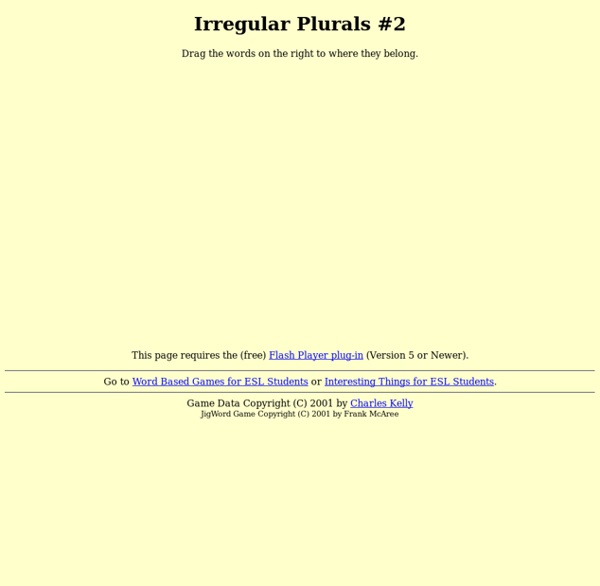



The Plural Poem The Plural Poem Fill in the missing nouns in the funny poem about the Plural of Nouns No wonder the English language is so very difficult to learn. I sometimes wonder how we manage to communicate at all! We'll begin with a box and the plural is . should be oxen, not oxes. The one fowl is a but two are called geese, Yet the plural of should never be meese. You may found a lone mouse or a whole set of , Yet the plural of is houses not hice. If the plural of is always called men, Why shouldn't the plural of be called pen? If I speak of a and you show me your feet, And I give you a , would a pair be called beet? If one is a tooth and a whole set are , Why should not the plural of booth be called beeth? Then one may be that and three would be those, Yet in the plural wouldn't be hose. is cats and not cose. We speak of a and also of brethren, But though we say , we never say Methren, Then the masculine pronouns are he, his and , But imagine the feminine , shis and shim,
ESL Classroom Games Billionaire Plurals Game ESL Interactive Fun Games Here we have the games carefully laid out for you. Follow the links to browse the variety of games offered. This is only the directory for interactive games and exercises. Our ESL fun games here include : Snakes and Ladders, Hangman, Spelling games, Wheel of Fortune, TV Games(Betting Game), Mazes, Memory Games, Matching exercises, Sequencing exercises, Picture Quizzes, Catch it and more. These games provide the ultimate fun in practising the following skills: Grammar Games & Interactive Exercises - Click Here! Games for Practising Grammar: Present simple/present progressive games, past tense games, present perfect games, comparative/Superlatives and more... Vocabulary Games & Interactive Exercises - Click Here! Games for practising English vocabulary: Lots of games by topics and game types Pronunciation Games & Interactive Exercises - Click Here! Games to practice English pronunciation, phonetics and phonics. Games and exercises to practice reading, spelling and lexis
Rules If you can't see the Babylon translation box, use this link for <a href=" or this one for <a href=" Descárgalo gratis aquí En inglés, la mayoría de las palabras se pluralizan agregando una "s" al singular, pero veremos que también hay otras formas. La mayoría agrega "s" al Singular Hay palabras con plurales irregulares Hay sustantivos que son siempre plurales Algunos sustantivos tienen la misma forma en el plural y en el singular Cuando terminan en " s/z/x/sh" o "ch", agregan "es" para formar el plural Cuando los sustantivos terminan en "o" hay dos maneras: -Si la "o" es precedida por una consonante, las palabras agregan "es". -Si la "o" es precedida por una vocal, agregan "s" Cuando los sustantivos terminan en "y", hay dos maneras: -Si la " y" es precedida por una consonante, la " y" cambia por "ies" -Si la "y" es precedida por una vocal, agregan una "s" Cuando terminan en "is", cambian por "es"
302 Found Singular plural possessive: Practice singular plural possessive by playing this interactive ESL board game. Choose whether to practice singular plural possessive by navigating a treacherous galaxy filled with green monsters, a sea filled with pirates or a river filled with crocodiles. Either way this will keep your heart pounding. Suddenly English grammar practice is no longer boring with these games. Games are useful for language learning because they provide a fun way to learn. Games are great for motivating students to learn.